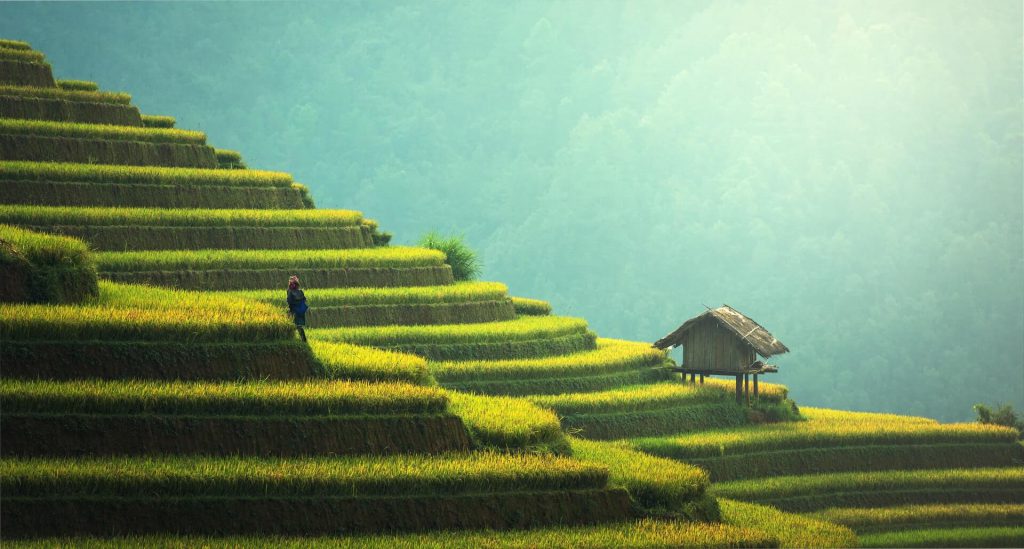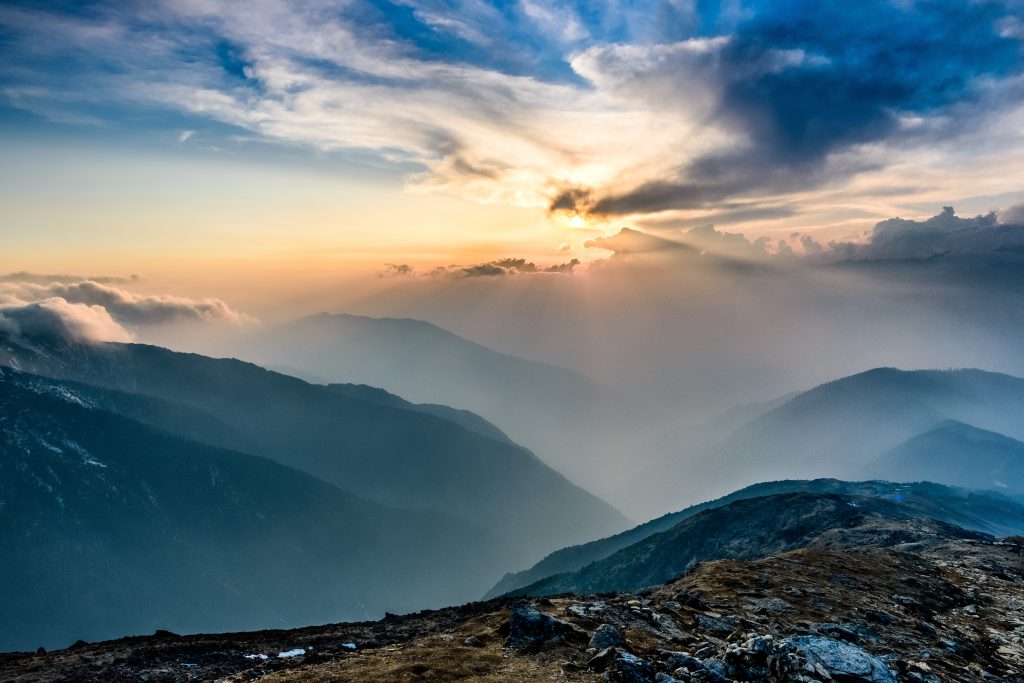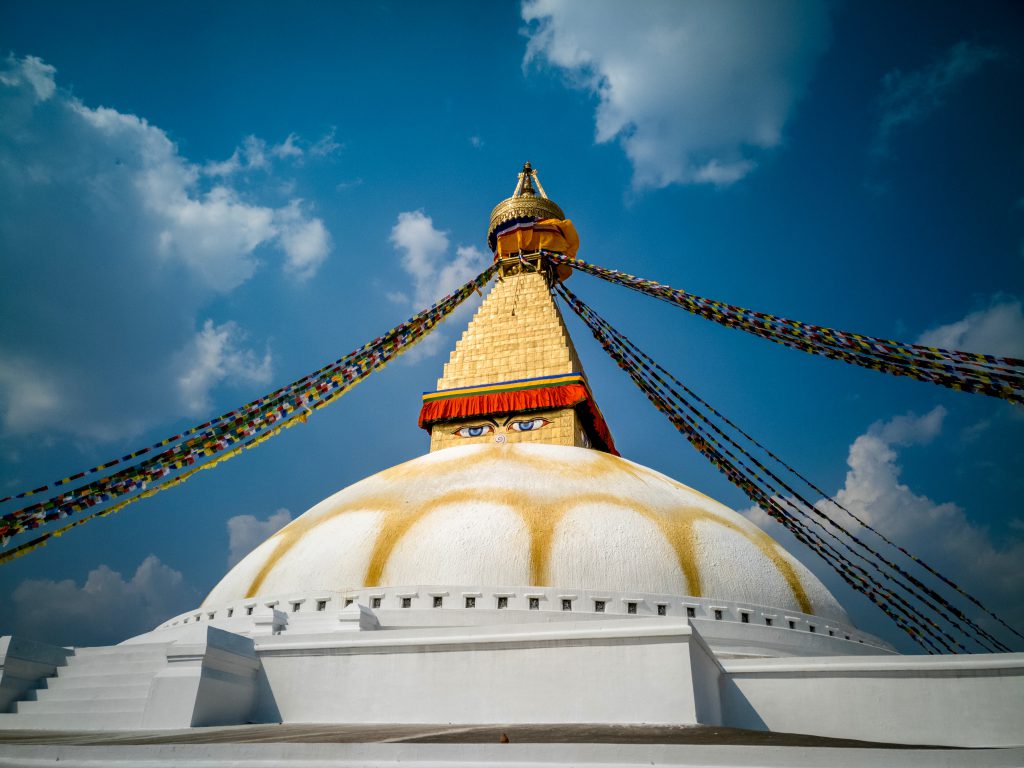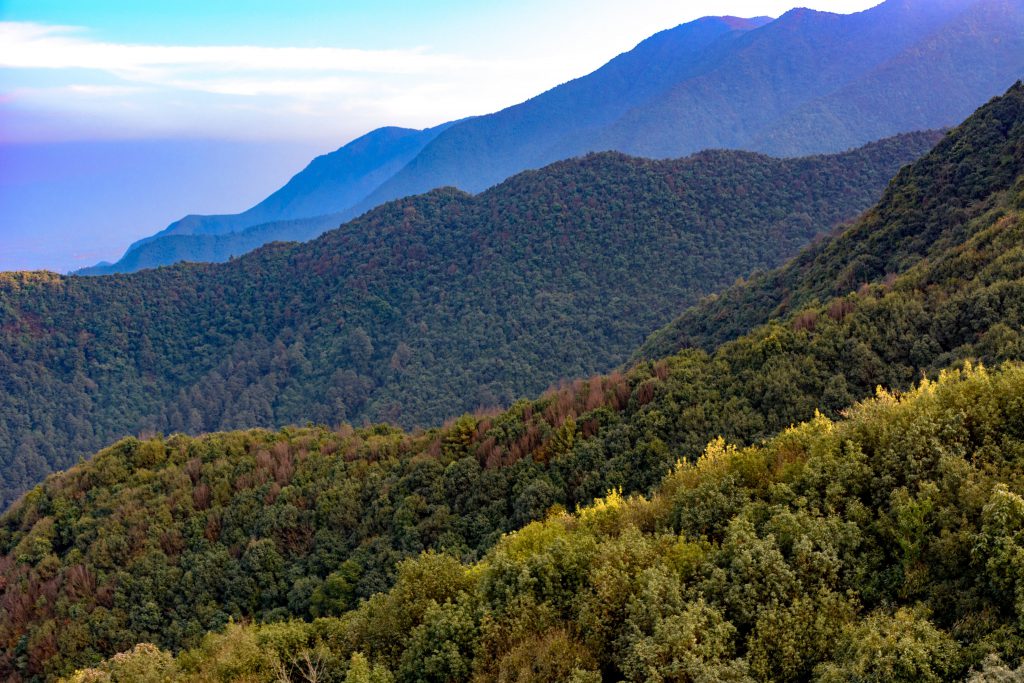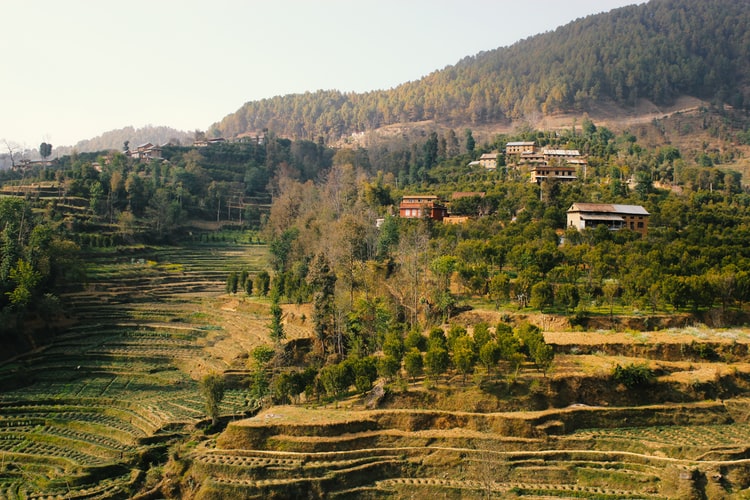The trek provides some great views of the Himalayas with a lot of the latter stages on the trek to Dulikhel along the valley ridge. Trek into the lush, forested trails of Shivapuri National Park, follow cascading rivers and experience a glimpse of authentic village life Some days are more energetic than others but the tour as a whole provides a healthy stretch of the legs. Along the way you pass through old valley settlements and many farming communities. Early sunrise views from Chissopani and especially Nagarkot are stunning. Dhulikhel, the last stage of the trek, there is an opportunity to experience old Newari culture at its best.The town by Nepali standards is very well organised, cohesive and works as a healthy habitat for the people who live there. Panauti and Namma Buddha also stand out. The day to Panauti takes you through a particularly beautiful valley. Namma Buddha an extremely important destination for Buddhists. is set within a lush forest. A big bonus that very few tourists trek the valley, so most of the time you are away from popular trails,be prepared to be surprised!.
- Panoramic vistas from Chisapani
- Sunrise views from Nagarkot, including Mt. Everest
- Stupas and Temples
- A fully supported and well-organised team
- Native culture and authentic village life
- Abundant birds and wildlife
- Shivapuri National Park
- Trail head is only one hour away from Kathmandu
One of our team will receive you at Tribhuvan International Airport for the transfer to your hotel. After time to settle you will be introduced to your tour guide for a tour briefing.The rest of the day is free to explore this bustling city.One of our team will meet you for the transfer to your hotel.
Visiting many of the historical sites in and around Kathmand, destinations that have managed to find a place in the UNESCO world’s heritage list. We begin with Swayambhunath climbing its stairs which are said to encompass the 13 paths to reach enlightenment. The Hindu heritage of Pashupatinath is next on our list resonating in the prayers of thousands who visit the temple each day. We head towards Kathmandu Durbar square to witness a historical journey encompassing generations of Nepalese Kings before ending our journey at Boudhanath well known for its sunset views. Overnight Kathmandu.
Drive from Kathmandu to Sundarijal. The trail climbs up through a forest and passes the village Mulkharka to Chisapani Danda .On a clear day there are great panoramic views of the mountains stretching from east to west from Chisapani.
An interesting trail to the hill retreat of Nagarkot perched on a ridge 32 km east of Kathmandu the trek is not too difficult it takes around six hours. We begin with a decent down to a small stream before a climb up to Nagarkot . The small settlement commands sweeping views of the Himalayays. Five of the world’s ten highest peaks Everest, Lhotse, Choyu, Makalu and Manaslu are visible from here on a clear day. Nagarkot is also a popular spot for sunrise and sunset views.
The trail climbs up to the viewing tower at Nagarkot before descending through lush forest we trek up to the ridge along the way there are some fantastic mountain views from the ridge. a longish day but as you are descending in height from Nagarkot to Dulikhel it is not that difficult, On reaching Dulikhel we transfer to our resort hotel.
We leave the hotel for the gradual hike up and down through forest to a ridge.From here there are beautiful mountain views.The trek takes about 3 hours to Panauti. Panauti is a beautiful ancient town and pilgriage destination with many temples. The town is inhabited by Newars, Tamang and Bramins. After lunch we either walk or drive back to Dulikhel.
We leave our hotel for the hike up to Namma Buddha the trail leads through villages and hill terraces in a beautiful wide valley. We hike up through a wood and on to Namma Buddha. Known for being one of the most important Buddhist sites in Nepal it is surrounded by some very interesting Tibetan Buddhist Monasteries. There are some splendid mountain views from here. We take lunch before the hike back to Dulikhel, a long but very rewarding day.
After Breakfast our transport awaits for the drive back to the Hotel in Kathmandu. It takes around 90 minutes.
we will meet you for the transfer to the airport as per your flight schedule.We hope you have enjoyed your time with us and we look forwad to meeting up again.
Cost Included
- Kathmandu to Sundarijal Kathmandu by car, van
- An English speaking guide and porter(s).
- All meals (Breakfast, lunch and dinner).
- Tea/Coffee three times a day.
- One night hotel in Nagarkot.
- One night lodge in Chisapani.
- Three nights hotel Dulikhel
Cost Not Included
- Personal Insurance
- Lunch & dinner in Kathmandu.
- Emergency Rescue evacuation.
- Personal expenses.
- Tipping (Tips).
- Bar bills & Beverages
Trip FAQs
Not on this trek as you will be staying in Hotel.
You can leave your additional luggage at your hotel in Kathmandu or at our company office in Thamel. Either way, your luggage will be waiting for you at your hotel when you return back from your trek.
You should bring trekking boots that are comfortable and broken in. There can be some snow at higher altitudes especially when crossing high passes, so it’s good to be prepared for a variety of conditions. Your footwear should be strong and durable. It should have a chunky sole—preferably made of Vibram or another durable material—and should also protect your ankles..
You can buy virtually everything you need for trekking from down jackets to water bottles in Kathmandu. There is a variety of branded stores as well as a large selection of copied products mainly in Thamel that are of fairly good quality. It’s still worth bringing your own gear if it doesn’t take up too much weight, especially your own trekking boots to avoid any potential issues when purchasing new shoes..
Tipping is not required but is expected, and really depends on how happy you were with the service. Guides (both for trekking and cultural tours), porters, and drivers are typically provided with a tip at the end of their service with you..
You only need to carry your day pack with daily essentials (sunblock, water, hat, light jacket, and camera) Our porters carry the bulk of your gear, such as extra clothing and overnight essentials
All of our guides at Himalaya Heart speak English and have had many years of experience in guiding foreign travelers. It’s a requirement that they all are trained in first aid as well and we carry a first aid kit during the trek.
You are never that remote on this trek and there is no chance of altitude sickness. However this is the detail we give to guests on longer treks If you fall ill during your trek, the course of action depends on what’s wrong. If it’s altitude sickness, moving to lower altitudes and taking altitude medication will solve this in most cases; if it’s severe, our guide will arrange for an emergency evacuation by helicopter Himalayan Heart will cover the initial costs then claim from your insurer (be sure that emergency helicopter rescue is covered in your travel insurance it is an essential requirement before travelling with us). If you have stomach sickness or another type of food or water-related illness, our guide will have medication on-hand for most common illnesses.
When’s the best time to visit Nepal?
The main seasons for trekking are the spring (Mar to May) and autumn (Sep to Nov) when you’ll have clear skies and superb mountain views. The winter (Dec to Feb) is also a great time to visit— these months offer a unique experience and fewer crowds but lower altitude treks are better at this time of year as its cold at night.
What’s it like during the monsoon season?
During the monsoon season (Jun to Aug), most of Nepal experiences heavy rain for a few hours each day. It’s humid, wet, and the trails in the lower regions (Ghorepani, Ghandruk, Langtang, etc) can be quite muddy. If you don’t mind the rain you’ll have the trails to yourself, the skies often clear up in the morning, and certain treks offer stone-paved trails that drain the rain and make for easy trekking. Also, certain regions, like Mustang and the upper reaches of Everest, lie in the rainshadow of the Himalaya and receive little rain but views however are still likely to be restricted.
What’s the difference between private and group tours?
Private tours are tailor-made itineraries built by us around your travel dates and personal interests, whereas group trips are pre-packaged and depart on specific dates. Group trips are also open for others to join, whereas private trips are just for you. You will find a list of fixed departure dates on our website.
How do I get my visa for Nepal?
For most nationalities, you can get your visa in Kathmandu. It takes around 45 minutes and is the most convenient way to get your visa you will need passport size photos.. You can also apply for a visa in advance from a local Nepali consulate in your country if you’d like to have everything arranged in advance. Cost15 Days – 25 USD / 30 Days – 40 USD / 90 Days – 100 USD
How much luggage can I take on domestic flights?
For mountain flights, you’re allowed 5 kg. carry-on to the plane and 10 kg. for checked-in luggage. For non-mountain sector flights, the check-in allowance increases to 20-25 kg.
How many days should I spend in Nepal?
If you’re mainly looking to experience Nepal’s cultural and natural highlights, you can have a great experience in 5-9 days, where you can visit two regions (likely Kathmandu and Pokhara perhaps go on Safari at Chitwan). If you intend to go trekking consider at least 10 days (more is better) to have enough time to reach higher altitudes and safely acclimatize if need be.To undertake one of the longer, classic treks in Nepal or to combine multiple regions and activities into one visit, think about 14-20 days and more if possible.
Are hotels included in the tour price?
Himalaya Heart organises complete tours, meaning everything is taken care of from the moment you arrive in Nepal to the moment you leave, including all of your accommodation in a three star Hotel. If you require better accommodation please let us know and we can arrange this and adjust the tour cost accordingly. Each of our tour pages shows clearly what is and what is not included in the tour price.
Are there any extra expenses not included in my tour price?
Personal expenses (tips, soft drinks, bar bills, laundry, telephone calls, donations, and extra snacks, etc) are not included in your tour price. When checking a particular trek page on our website we have clearly stated what is and what is not included. If you’re going trekking, the only things you’ll need to pay for out of pocket are wifi and battery charging (when available), extra meals outside of what’s included, alcohol, and soft drinks and perhaps hot showers.

 +977 9851093973 (Thakur)
+977 9851093973 (Thakur)